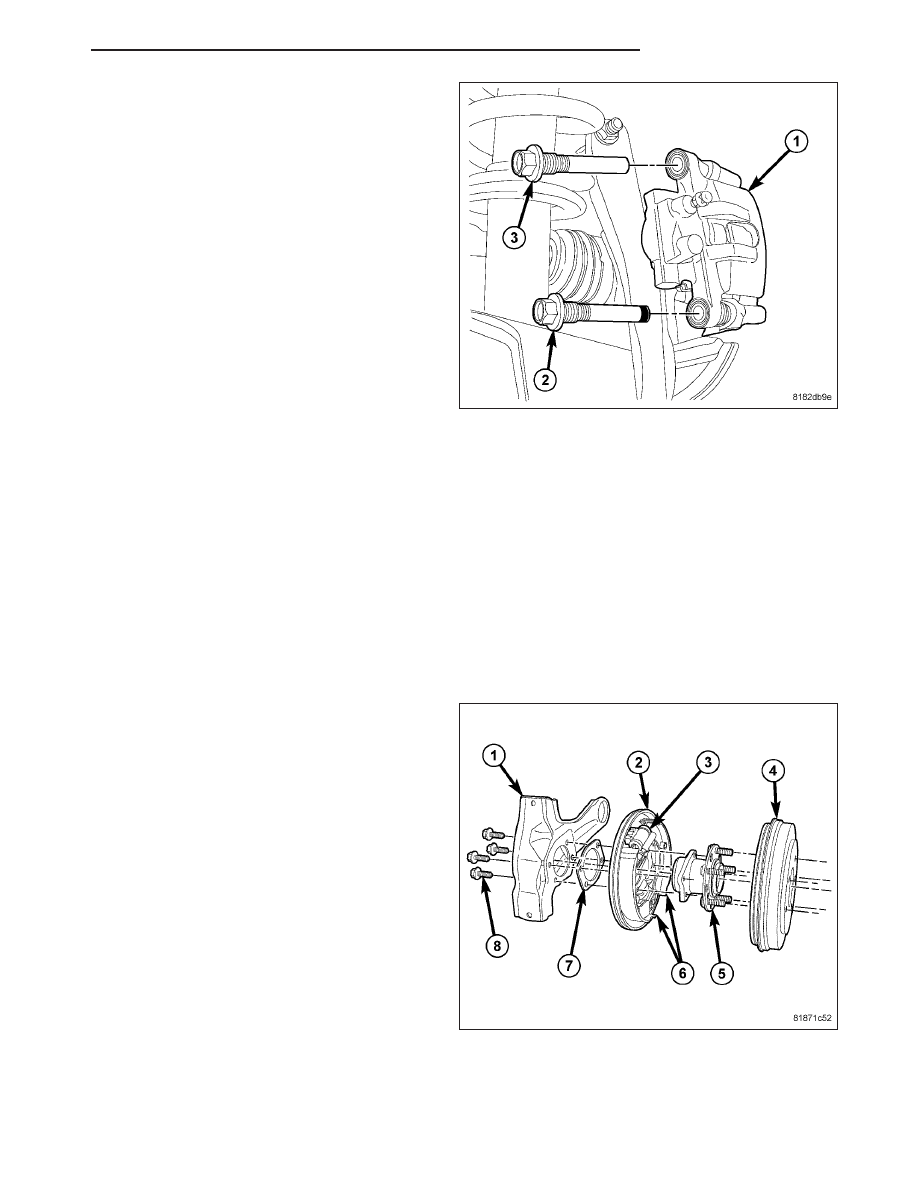Dodge Caliber. Manual - part 79

At each rear brake caliper (1) this bolt (2) is placed at
the lower location.
Front disc brakes are equipped with an audible wear indicator on the right side inboard brake pad only. The left side
pads do not include an audible wear indicator.
Rear disc brakes are equipped with audible wear indicators on both left side and right side inboard brake pads.
When the brake pads are replaced, only brake pads meeting the Original Equipment Manufacturer (OEM) formula-
tion (such as Mopar
T
replacement parts) should be used.
All brake rotors are fully coated with zinc dust, water-soluble, environmentally friendly corrosion preventive. Both the
friction surfaces and the vents are coated. During initial brake applications of a new rotor, the brake pads scrub the
coating off the friction surfaces, ensuring that the remainder will be rust free. Coating the vents also ensures that
there will not be a loss of heat capacity over time.
REAR DRUM BRAKES
All rear drum brake equipped vehicles feature 9 inch (229 mm) rear drum brakes. The drum brakes are all two-shoe
(7), internal-expanding type with an automatic adjuster screw.
Each rear drum brake consists of these major compo-
nents as well as the attaching hardware:
•
Adjuster
•
Drum (4)
•
Shoes (6)
•
Support Plate (2)
•
Wheel Cylinder (3)
The rear drum brakes also serve as part of the parking brake system. (Refer to 5 - BRAKES/PARKING BRAKE -
DESCRIPTION)
PM
BRAKES - BASE
5 - 17